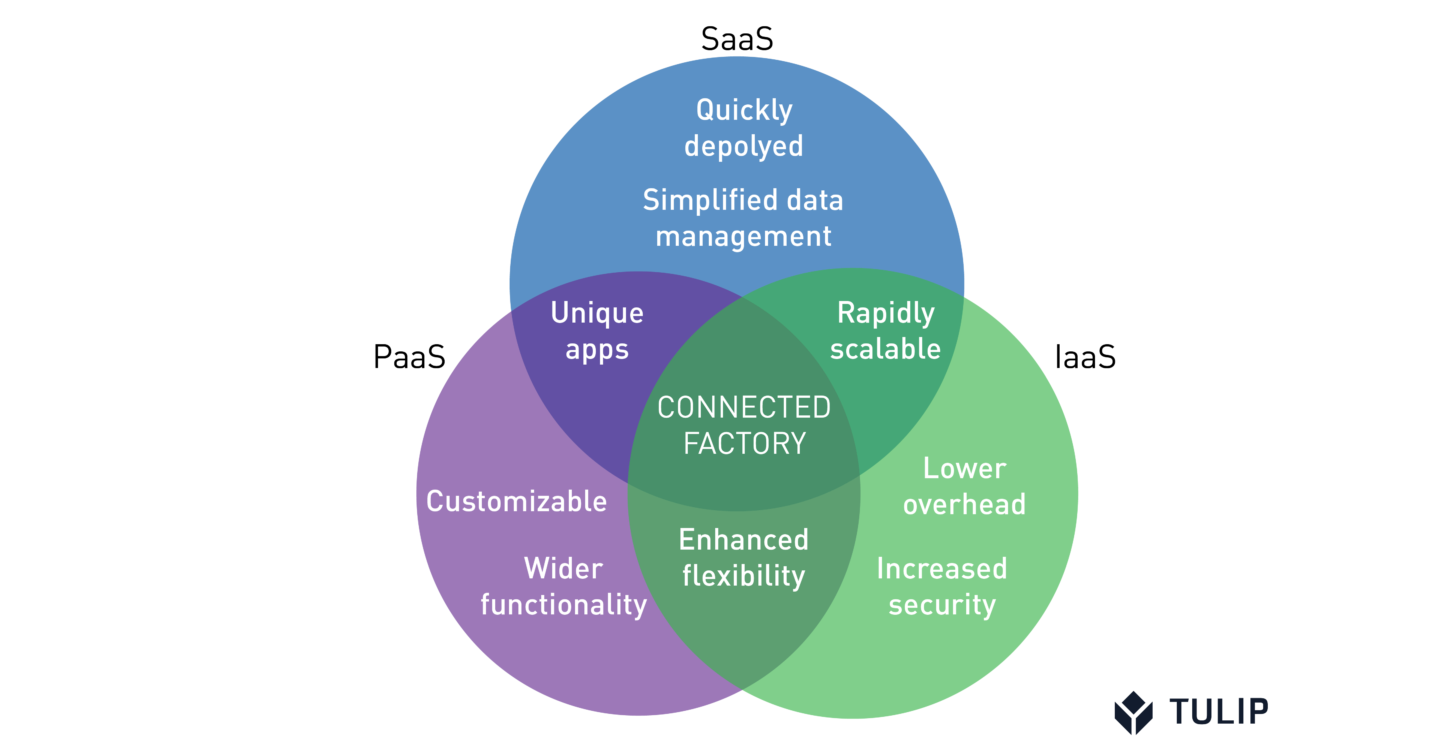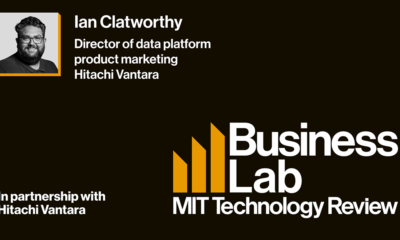Politics
A Beginner’s Guide to Understanding and Building a PaaS Marketing Strategy
Published
2 years agoon
By
Drew Simpson
It feels like yesterday when the first public PaaS (platform as a Service) named Zimki was launched at EuroOSCON in March 2006. Fontango launched the beta version after finishing its development in 2005. However, when PaaS was introduced to the masses — not many people understood its importance very well. Therein, defining a proper PaaS marketing strategy seemed unnecessary.
Even though the core marketing for every product will always remain the same — we sell, and market products, and clients buy them as they need them. The problem now is that while the initial intent of the service was to simplify code writing – its usage and benefits have grown by manifolds.
According to Financial News media, “the PaaS market size is expected to grow to $164.3 Billion by 2026.” This suggests that many more companies are looking into private & hybrid PaaS options to make the most of the cloud computing market. In addition, Statista’s report on worldwide PaaS shows that the market revenue will surpass $100 Billion in the US alone this year. Moreover, the global PaaS market will break records and exceed $400 Billion in 2022.
While these are all hypotheses until we see these numbers, the chances of these expert insights coming true are more than us expecting rain just because our nose tingled a bit when we woke up this morning. Thus, marketers must start by understanding PaaS basics and the key characteristics that will help them create a good PaaS marketing strategy.
Understanding PaaS — a brief guide for marketers
What is PaaS
The simplest way to define and describe PaaS is by first understanding that it is a form of cloud computing. Its progression has changed how business applications are built and run. With the help of PaaS, now a new application can be delivered within a web browser in lesser time. The developers can use a point-and-click interface or deploy it through a custom code.
How to use PaaS
PaaS allows businesses to:
- deploy
- run
- manage custom cloud application
Without introducing any complexities they faced before, building and maintaining the company’s servers and infrastructures. In short, it can be said that PaaS offers a time & cost-efficient solution to the business.
Differences between PaaS, SaaS, and IaaS
Cloud computing birthed more than just PaaS – it also gave us its siblings, IaaS and SaaS. While most companies like Netflix use SaaS, all 3 of these offer custom cloud computing solutions depending on the type a company requires.
IaaS (Infrastructure as a Service) allows organizations to manage their business resources on the cloud. These resources include their network, servers, and data storage. IaaS is a flexible category and offers a ‘pay-as-you-go’ option to add custom features.
PaaS helps businesses and developers host, build, and deploy agile & customer-facing applications by offering them a custom framework. PaaS management is somewhere between IaaS and SaaS in a way that lets you build upon the framework and manages most of the items for you.
SaaS (software as a service) needs the least amount of management from you and is the most commonly used cloud service. These products offer cloud-based tools and applications to both consumers and businesses.
“Companies in the industry are increasingly preferring hybrid cloud solutions to increase efficiency, innovation, and reduce costs. A hybrid cloud refers to a cloud infrastructure environment that is a mixture of private cloud, on-premises computing and public cloud solutions. Platform as a service providing companies in the industry are leveraging this technology to enhance their agility, capability, increase development & deployment speed, and reduce IT costs.”
– Quote from Research and Markets Report
Is salesforce SaaS or PaaS or IaaS?
Although many people argue that salesforce is either SaaS or a hybrid example of both SaaS and PaaS combined, the company says that Salesforce is a PaaS. The Salesforce platform is the world’s number 1 PaaS solution. Moreover, the SalesForce Lightning extension is considered the next-gen PaaS solution.

Examples of PaaS
Some other examples of PaaS include:
- SAP Cloud
- Heroku
- Cloudways
- Microsoft Azure
- Apprenda Cloud Platform
- Google App Engine (from Gmail to Google Earth, everything is PaaS)
- Doku
- AWS Lambda
- Pivotal Cloud Foundry
- IBM Cloud Foundry
- Oracle Cloud Platform
- Red Hat OpenShift
- Zoho Creator
- Wasabi
Building a Proper PaaS Marketing Strategy
Let’s look at the steps necessary to consider when building a PaaS marketing strategy. Ironically, these steps will work for all kinds of cloud marketing strategies – be it IaaS marketing, SaaS marketing, or XaaS marketing.
Step 1 – Understanding the Product from a Marketer’s Perspective
When you are working on building a PaaS marketing strategy, it is essential first to understand the basics of PaaS (as I have explained above) and the features your product offers. No matter how technological your product is – if your team has no idea about it, they can’t help others think of it as a solution to anything as well.
Step 2 – Creating Custom Target Market Segments
Most tech companies target other businesses, but that is not all you need to know. For example, a company’s CEO or founder might not have enough time to read your inmails, emails, or your company page despite following it. The best target audience would be people who can quickly understand the importance of your product. Therefore, your target audience should always include a primary focus on the IT or Tech department heads, depending on the marketed product type.
Step 3 – Competitor Research
Your product needs to stay ahead for better revenue and sales generation. Doing thorough competitor research can help you discover the growth points they might be missing and offer you a case study of what worked for them and what didn’t. However, knowing what works for them doesn’t mean you just steal their ideas. If you do so – you might get a little attention from the target audience, but you will still be behind your competitor. Instead, discover the market gaps & target demographics and then work on a strategy to fill them in instead. Use their already workable strategy as garnishing to yours rather than making it a holy grail.
Step 4 – Prioritizing Marketing Types & Platforms
This is by far the most crucial point regarding your marketing strategy. While we all know digital marketing is the new gen marketing, no one marketer is a jack of all marketing types. So for step 4, you need to think about the marketing types that will help you with;
- Brand Visibility
- Brand Authority
- Lead Generation
- Revenue Generation
Before I tell the marketing types that I include in the strategies I build – it is essential to understand that they vary from business to business. If a company is just launching itself, it might not be able to do everything and anything. Therefore, always prioritize when building a strategy.
First, you need to pin down the growth points and then expand your strategy from there. Set reality-based KPIs and expectations for the team to ensure there’s no burnout or blame game, and take it six months at a time. My go-to PaaS marketing strategy always includes:
- Organic Marketing
- Inbound Marketing
- Content Marketing
- Voice Marketing (relatively new technique)
- Search Engine Marketing
- Product Marketing
- User-Generated Marketing.
- Acquisition & Retention Marketing
- Referral Marketing
- Brand Marketing
- Email Marketing
- Conversational & Word-of-Mouth Marketing
- Video Marketing
- Neuro-Marketing with a dash of Emotional Marketing
- Social Media Marketing (just because your product needs b2b marketing doesn’t mean Linkedin is the only social media solution)
You can also throw in influencer marketing to the mix – if your budget allows it. For me, the first influencers are always the clients themselves.
Key Points to keep in mind when building a Proper PaaS Marketing Strategy
1. Customer Experience
I once worked with a tech company that offered eLearning solutions to businesses. Yet, everyone in the leadership didn’t know how to log in to WordPress, download surveys from SurveyMonkey, etc. This helped the team understand the importance of customer experience, so they always worked extra hard to ensure their customers never faced an issue when using their services.
Likewise, designing an application or website is essential to keep the customer experience in mind. The idea is to make things easy for them. Don’t overcomplicate things by keeping the blogs tab just in the footer or hidden in a scroll-down tab. The easier and more functional your service is for the customers, the more word-of-mouth marketing you get.
From color psychology to the font type – you need to have a look at it all.
2. User Onboarding
When it comes to PaaS, first expressions are the last ones, and people mostly do judge a book by its cover. However, client experience is an integral part of any product marketing team when selling something technical because not all clients are equipped with the knowledge to understand technical jargon and processes. Therefore, user onboarding comes in handy and helps showcase your product’s total value.
A user onboarding benefits in not just customer acquisition or activation, but aims to build a retention level with upward growth in a way that also increases revenue. Moreover, if the user onboarding is done correctly, it can also lead a company to acquire new customers due to the word-of-mouth marketing done by the existing happy client.
With existing customers marketing for you by referring their peers and colleagues – your customer acquisition costs can reduce significantly, creating a snowball effect for the business growth. To conclude, user onboarding can help you win your customers over in the first few minutes and make them stay loyal to you for not just weeks but years!
3. Trial Periods
One of the best ways to convert a potential customer is by offering them a trial period of the product. This lets them test it just like they want to and gives them an illusion of getting something for free. Take Netflix, for example, they started with a 30-day free trial for their potential subscribers. Now when they have gained enough attention – they finish the trial periods.

You can drive a similar strategy as well.
4. Highlight Benefits rather than Features
Someone who’s not as technologically advanced as the developers of your product might not care about all the features it offers. Instead, they want to know why your product is best for them. Therefore, keeping the communication lines between you and your customer as clear and concise as possible is essential. Focus on how your product will add value to their costs, employees, and time.
This is where your competitor research will come in handy; if you know your customers’ pain points, you can offer them the solutions they want. However, in trying to do so, ensure you don’t overwhelm the prospects by giving them too much information.
An example is when an Eco-friendly alternative company offers solutions like bamboo straws or brushes. They don’t go into how sleek their product was because of some specific processing or ingredient – their main selling line is that this thing here you see will help the environment and decay faster in comparison to plastic. From their blogs to social media posts and podcasts, they focus on what their products offer in value rather than something else, and it works.
Another example of this is SalesForce – when talking about PaaS and why they are the number 1 solution for companies – they only talk about the benefits and pain points. They don’t go into details about the features. However, they created an infographic and added all the features to it rather than going into detail.
5. Set the Right Expectations
Never lie to the leadership that you can generate so and so revenue and little time. Long-term growth can NOT be achieved with black hat methods and techniques. A company’s growth takes time – no one will wake up, see your product, and think they should click buy because they saw an advert or because you sent them an email. Tofu, Mofu & Bofu exist for a reason in the sales funnel.
Similarly, don’t lie when marketing your product. There’s no point saying a train can fly to sell it only to end up with negative reviews on the internet. Today’s generation is savvy and knows when they are being marketed to. Hence, it is essential to be transparent about your product’s functionality rather than selling its subscription like a unicorn. You might get one-time payments, but they can be canceled too.
Bad reviews mean a reduction in customer acquisition and retention rates – directly impacting your sales and revenue.
Conclusion
Developing a marketing strategy will always focus on similar platforms and techniques — no matter which product or company. The only thing that adds-on to the value of a strategy is its execution per planning. Many tech companies have started to prefer hiring marketing and content teams with backgrounds in tech or software engineering because they feel it is easier than having employee integration or product training. But by doing so, they are missing out on the most important thing — a layman’s viewpoint. If everyone in the company understands the product without trying it — they can never market it to a non-technical person.
With a proper understanding and a good marketing strategy for SaaS, PaaS, IaaS, or XaaS, as discussed in this content piece, you can reach the right target audience and demographics per your requirements.
Featured Image Credit: Provided by the Author; Thank you!
Sijdah Hussain
Digital Marketer
Sijdah is an Organic Growth Marketer with 7+ years of experience in the content industry from writing to advising and 5+ years of experience in SEO – she have extensive experience working in a fast-paced work culture in both b2b and b2c industries.
She enjoys designing and implementing content strategies with a consistent brand voice for social media, website and webpage layouts per SEO algorithms to ensure steady growth and online presence & help improve the company’s sales efforts.
You may like
-


Your guide to talking about climate tech over the holidays
-


This company is building AI for African languages
-


The Download: the origins of life, and building Facebook’s AI empire
-


Decarbonizing your data strategy
-


What is the MACH-6? How to Use it to Optimize Your Content Strategy
-


The Importance of Diversity and Inclusion in Building a Strong Tech Team
Politics
Fintech Kennek raises $12.5M seed round to digitize lending
Published
7 months agoon
10/11/2023By
Drew Simpson
London-based fintech startup Kennek has raised $12.5 million in seed funding to expand its lending operating system.
According to an Oct. 10 tech.eu report, the round was led by HV Capital and included participation from Dutch Founders Fund, AlbionVC, FFVC, Plug & Play Ventures, and Syndicate One. Kennek offers software-as-a-service tools to help non-bank lenders streamline their operations using open banking, open finance, and payments.
The platform aims to automate time-consuming manual tasks and consolidate fragmented data to simplify lending. Xavier De Pauw, founder of Kennek said:
“Until kennek, lenders had to devote countless hours to menial operational tasks and deal with jumbled and hard-coded data – which makes every other part of lending a headache. As former lenders ourselves, we lived and breathed these frustrations, and built kennek to make them a thing of the past.”
The company said the latest funding round was oversubscribed and closed quickly despite the challenging fundraising environment. The new capital will be used to expand Kennek’s engineering team and strengthen its market position in the UK while exploring expansion into other European markets. Barbod Namini, Partner at lead investor HV Capital, commented on the investment:
“Kennek has developed an ambitious and genuinely unique proposition which we think can be the foundation of the entire alternative lending space. […] It is a complicated market and a solution that brings together all information and stakeholders onto a single platform is highly compelling for both lenders & the ecosystem as a whole.”
The fintech lending space has grown rapidly in recent years, but many lenders still rely on legacy systems and manual processes that limit efficiency and scalability. Kennek aims to leverage open banking and data integration to provide lenders with a more streamlined, automated lending experience.
The seed funding will allow the London-based startup to continue developing its platform and expanding its team to meet demand from non-bank lenders looking to digitize operations. Kennek’s focus on the UK and Europe also comes amid rising adoption of open banking and open finance in the regions.
Featured Image Credit: Photo from Kennek.io; Thank you!
Radek Zielinski
Radek Zielinski is an experienced technology and financial journalist with a passion for cybersecurity and futurology.
Politics
Fortune 500’s race for generative AI breakthroughs
Published
7 months agoon
10/11/2023By
Drew Simpson
As excitement around generative AI grows, Fortune 500 companies, including Goldman Sachs, are carefully examining the possible applications of this technology. A recent survey of U.S. executives indicated that 60% believe generative AI will substantially impact their businesses in the long term. However, they anticipate a one to two-year timeframe before implementing their initial solutions. This optimism stems from the potential of generative AI to revolutionize various aspects of businesses, from enhancing customer experiences to optimizing internal processes. In the short term, companies will likely focus on pilot projects and experimentation, gradually integrating generative AI into their operations as they witness its positive influence on efficiency and profitability.
Goldman Sachs’ Cautious Approach to Implementing Generative AI
In a recent interview, Goldman Sachs CIO Marco Argenti revealed that the firm has not yet implemented any generative AI use cases. Instead, the company focuses on experimentation and setting high standards before adopting the technology. Argenti recognized the desire for outcomes in areas like developer and operational efficiency but emphasized ensuring precision before putting experimental AI use cases into production.
According to Argenti, striking the right balance between driving innovation and maintaining accuracy is crucial for successfully integrating generative AI within the firm. Goldman Sachs intends to continue exploring this emerging technology’s potential benefits and applications while diligently assessing risks to ensure it meets the company’s stringent quality standards.
One possible application for Goldman Sachs is in software development, where the company has observed a 20-40% productivity increase during its trials. The goal is for 1,000 developers to utilize generative AI tools by year’s end. However, Argenti emphasized that a well-defined expectation of return on investment is necessary before fully integrating generative AI into production.
To achieve this, the company plans to implement a systematic and strategic approach to adopting generative AI, ensuring that it complements and enhances the skills of its developers. Additionally, Goldman Sachs intends to evaluate the long-term impact of generative AI on their software development processes and the overall quality of the applications being developed.
Goldman Sachs’ approach to AI implementation goes beyond merely executing models. The firm has created a platform encompassing technical, legal, and compliance assessments to filter out improper content and keep track of all interactions. This comprehensive system ensures seamless integration of artificial intelligence in operations while adhering to regulatory standards and maintaining client confidentiality. Moreover, the platform continuously improves and adapts its algorithms, allowing Goldman Sachs to stay at the forefront of technology and offer its clients the most efficient and secure services.
Featured Image Credit: Photo by Google DeepMind; Pexels; Thank you!
Deanna Ritchie
Managing Editor at ReadWrite
Deanna is the Managing Editor at ReadWrite. Previously she worked as the Editor in Chief for Startup Grind and has over 20+ years of experience in content management and content development.
Politics
UK seizes web3 opportunity simplifying crypto regulations
Published
7 months agoon
10/10/2023By
Drew Simpson
As Web3 companies increasingly consider leaving the United States due to regulatory ambiguity, the United Kingdom must simplify its cryptocurrency regulations to attract these businesses. The conservative think tank Policy Exchange recently released a report detailing ten suggestions for improving Web3 regulation in the country. Among the recommendations are reducing liability for token holders in decentralized autonomous organizations (DAOs) and encouraging the Financial Conduct Authority (FCA) to adopt alternative Know Your Customer (KYC) methodologies, such as digital identities and blockchain analytics tools. These suggestions aim to position the UK as a hub for Web3 innovation and attract blockchain-based businesses looking for a more conducive regulatory environment.
Streamlining Cryptocurrency Regulations for Innovation
To make it easier for emerging Web3 companies to navigate existing legal frameworks and contribute to the UK’s digital economy growth, the government must streamline cryptocurrency regulations and adopt forward-looking approaches. By making the regulatory landscape clear and straightforward, the UK can create an environment that fosters innovation, growth, and competitiveness in the global fintech industry.
The Policy Exchange report also recommends not weakening self-hosted wallets or treating proof-of-stake (PoS) services as financial services. This approach aims to protect the fundamental principles of decentralization and user autonomy while strongly emphasizing security and regulatory compliance. By doing so, the UK can nurture an environment that encourages innovation and the continued growth of blockchain technology.
Despite recent strict measures by UK authorities, such as His Majesty’s Treasury and the FCA, toward the digital assets sector, the proposed changes in the Policy Exchange report strive to make the UK a more attractive location for Web3 enterprises. By adopting these suggestions, the UK can demonstrate its commitment to fostering innovation in the rapidly evolving blockchain and cryptocurrency industries while ensuring a robust and transparent regulatory environment.
The ongoing uncertainty surrounding cryptocurrency regulations in various countries has prompted Web3 companies to explore alternative jurisdictions with more precise legal frameworks. As the United States grapples with regulatory ambiguity, the United Kingdom can position itself as a hub for Web3 innovation by simplifying and streamlining its cryptocurrency regulations.
Featured Image Credit: Photo by Jonathan Borba; Pexels; Thank you!
Deanna Ritchie
Managing Editor at ReadWrite
Deanna is the Managing Editor at ReadWrite. Previously she worked as the Editor in Chief for Startup Grind and has over 20+ years of experience in content management and content development.
